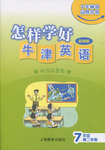题目内容
---I’m dead tired. I can’t walk any further, Jenny.
---____________, Tommy. You can make it!
A. Come on B. No problem C. No hurry D. That’s OK
A

练习册系列答案
 怎样学好牛津英语系列答案
怎样学好牛津英语系列答案
相关题目
— I’m dead tired. I can’t walk any farther, Jenny.
— _______, Tommy. You can do it!
|
A.No problem |
B.No hurry |
C.Come on |
D.That’s OK |
 Understanding this behavior may help scientists figure out how to stop Argentine ants from invading new places and causing problems. Choe would like to find a way to use the newly discovered chemicals to spread ant killer to Argentine ant nests.
Understanding this behavior may help scientists figure out how to stop Argentine ants from invading new places and causing problems. Choe would like to find a way to use the newly discovered chemicals to spread ant killer to Argentine ant nests.